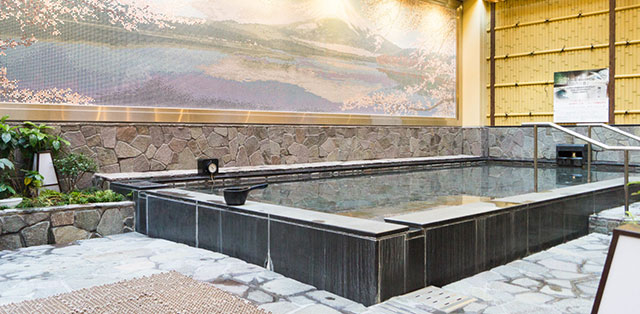
Onsen hot springs get all the publicity in Japan when it comes to bathing, but a trip to the communal sento bath house has been an integral part of local life for centuries. We've prepared a step-by-step guide for those who wish to conquer the unknown.
-
In the not-so-distant past, not everyone had access to a bath at home, especially in the cities, as heating water was costly and also presented potential fire hazards. It simply made more sense for a village to have a main bathing area, and as urban populations were growing quickly after the war, they became even more necessary. Public baths serve a dual purpose: a place to bathe and also socialize with those in the local community.
![]()
![]()
While you won’t be finding spectacular views of gushing rivers or mountains, sento can still be an interesting stop if you’re keen on exploring truly local culture in the city and experiencing a bit of post-war Tokyo as it continues to fade away. Plus, they’re usually much more friendly to visitors with tattoos if that’s an issue you might run into at an onsen.
![]()
Though the number of sento is fading in Japan, dropping to around 2,800 as of 2012, you should be able to find something around your area. The most common signifier for a sento is a banner or sign with the ゆ (yu) character on it, which is the universal symbol for a sento. There are small older-style sento that have long histories and have served multiple generations within a neighborhood, but also newer “super sento” that are more like a Disneyland for bathing and relaxing. Here, we’re just talking about the classic old-style sento you can find around town.
When you walk in a local sento, you’ll usually find a male and female entrance divided by a counter with staff collecting payments. Cost is usually a few hundred yen, but may vary depending on the amenities inside. Sometimes the sauna can cost a bit extra, especially if they have a “salt sauna”, where you can rub copious amounts of salt on your skin to exfoliate while you sweat it out. You’ll also need to get a small towel if you didn’t bring one.![]()
Once you’re inside, disrobe and put your things in a locker or changing room. The lockers usually have keys, but in some places, you may find that there’s just a basket for your belongings.
The first thing you do is wash yourself thoroughly before getting in the bath, and we don’t just mean grab a shower. Sit down in front of one of the showerheads, lather some soap and spend some time cleaning and scrubbing every inch of your body with your towel. After a full rinse, feel free to test the waters and relax for a while.![]()
Each sento has its own character, from the building architecture to the tiled interior, together with different services to help you relax. Aside from the standard baths of different temperatures, you may find dry and steam saunas, baths with specific aroma or added salts, and even denkiburo or baths with electric plates (!) inside the water itself. If you move your body close to the plate, you’ll get a bit of a shock that could apparently help stretch and soothe your muscles. To be safe, it’s probably best to stay away from this kind of bath if you have heart issues.
There’s usually no time limit, so once you’re satisfied and feeling more relaxed, step out of the bath and wring out your towel before drying off. Go back to the changing room, get dressed, and you’re ready to hit the town again.READ MORE- Visiting Japan with Tattoos: Manners/Etiquette
-
![]()
- Need to Know
-
02
Relaxing
Depending on the level of ryokan they may have large gardens and other facilities for you to explore, or simply have inviting spaces inside with traditional Japanese design. Lots of wood, paper, and other elements that are more reminiscent of a grand Japanese home than a hotel necessarily. However, all ryokan are different, and usually feature design and inspiration from the local area’s sights and culture.
![]()







 Go here
Go here






